How Many Layers Of Paint Does A Vehicle Have?
Posted by richard hale at
A car's paint job typically consists of 4 layers of paint, those layers include an e-coat, primer, base coat, and clear coat.
Automotive manufacturers are actively using digital technology and automating their operations to enhance productivity and meet the evolving needs of customers. This includes embracing trends like electric, connected, and autonomous cars, which are shaping the future of the industry.
In order to facilitate advancements, car manufacturers must explore methods to optimize their production processes. A prime example is automotive painting, which involves applying multiple layers of paint and measuring their thickness. Continue reading to discover the complexities associated with measuring automotive paint thickness and learn how you can streamline this intricate process with a single thickness test.
Measuring Automotive Paint Thickness Can Be A Challenge
Automotive paint is typically applied in multiple layers, usually four to five, depending on the car manufacturer and color. A car's paint job typically consists of an e-coat, primer, base coat, and clear coat, all of these are applied on a metal substrate. Additionally, certain colors may require an extra layer of paint, this is referred to as mica.
Many existing measurement options do not provide the ability to observe the thickness of individual layers in a single test. Certain methods necessitate measuring the overall thickness after each coat of paint is applied, followed by a manual subtraction to obtain the thickness of each individual layer. This process is not only cumbersome but it's also very time-consuming.
Additionally, every car may have an extensive number of inspection points, ranging from 100 or even more, depending on its make and model. To track trends over time, the layer thickness is typically measured at the same locations.
Car manufacturers can shorten the production time in the painting of cars by:
- Reducing the curing time between each paint application
- Measuring paint layer thickness after all paint layers have been applied—rather than after each paint application
This improved workflow requires a technology that can measure the individual layer thickness and the total paint layer thickness in one test at the end of the production line.
Better, Faster Way to Measure Automotive Paint Thickness
The good news, there is a faster way to measure paint thickness.
The FS 688 Paint Meter is a thickness gauge used for measuring automotive paint thickness, it provides high-speed and high-frequency measurements of multiple paint layers. It also provides the individual layer measurements and total thickness of the paint layers with just one single test.
Over 15,000 Car Dealers and Auto Auctions use FenderSplendor Paint Meters.
- Reads both Steel and Aluminum Automatically
- No Calibration needed. Automatic Power On and Off
- Large Lighted "Ice Blue" Backlighted Display
- Comes with Protective Pouch
- Free Shipping in the USA and Canada.
Be sure you are buying the #1 Paint Meter for Automobile Dealers when you buy. Sold and Serviced in the USA.
- The only true 3 year replacement warranty with 24 hour replacements shipped directly from our USA office.
- Fully automatic, with no hidden buttons or calibration required.
- Reads Steel and Aluminum automatically...no need to switch
- Large, Ice Blue Lighted Display, easy to read at night and in bad weather.
- Rock Solid 90 Day Money Back Guarantee
- Sold and Warrantied in the USA
In Closing
It’s tough to do a job when you don’t have the right tool. You can’t change your tires if you can’t remove the lugnuts. The same is true about your car paint, you can’t measure the thickness of your paint without the right tool.



